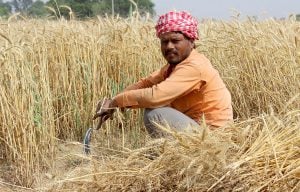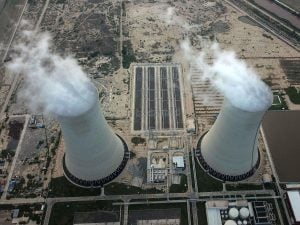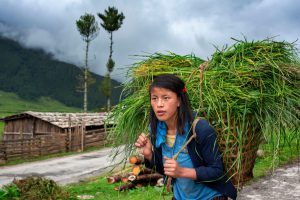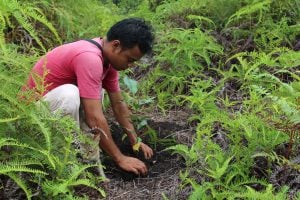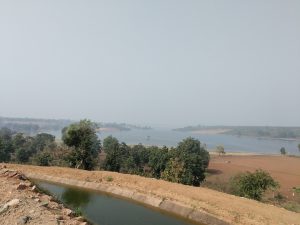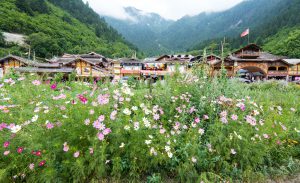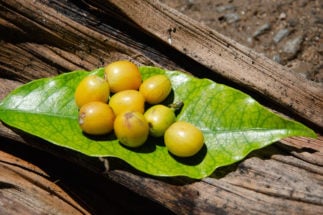By its very definition the impact of Covid-19 was difficult to anticipate. While the SARS and Ebola outbreaks had recently shown the world the dangers of epidemics linked to diseases migrating from animal to human hosts, each disease has its own way of spreading and its own fatality rate, making it difficult to anticipate how to respond beforehand. Nevertheless the one thing that was predictable was that access to clean water would be critically necessary to deal with any health emergency.
The current crisis has highlighted this like never before. Covid-19 seems particularly susceptible to soap and water. Not everyone, though, has equal access to water, and in the Hindu Kush Himalayan (HKH) region, the burden of fetching and managing water falls on women. There is little understanding of how this plays out across the Himalayas for a variety of reasons, especially because cooperation across the region is limited.
Suman Bisht, senior gender specialist at the International Centre for Integrated Mountain Development (ICIMOD), laid out the challenges. The first and foremost being that the eight countries in the HKH region – Afghanistan, Pakistan, India, Nepal, Bhutan, China, Bangladesh, and Myanmar – have difficult relationships and contested borders. This makes any work challenging, more so when it comes to marginalised communities within the region.
Locked out of decision-making
To make matters worse, in many places women are kept out of decision-making roles when it comes to water management – meaning their needs (and that of the households they manage) are often not taken into consideration when policies and plans are made. This has a direct impact on the lack of research on the subject. In 2012 ICIMOD convened the first conference of its kind in Bhutan in 2012, where researchers reviewed what little research already existed, and discussed anecdotal data on poverty and vulnerability of women.
One of the studies discussed was titled, “Situational Analysis of Women Water Professionals in South Asia”, published in 2009, looked at women in bureaucracy and decision-making in Pakistan, India, Nepal, Bangladesh, and Sri Lanka. The numbers were startling (it is unclear whether, and by how much, this has changed in the last decade). Women, as a percentage of employees in major water-related bureaucracies, accounted for somewhere between 2-5% of the staff. There were none in the most senior positions.
The absence of women in senior positions has an obvious impact on the maintenance of water because the roles of men and women are interpreted in starkly different terms. In a 2017 study, titled “Gendered Responses to Drought in Yunnan Province, China” these differences were clearly brought out. As the Yunnan region suffered 12 years of drought (2002-14) it led to male migration out of the region, but it also showed how the search for water became gendered. Both men and women responded to the crisis by focussing on water gathering, but:
“Men understood gathering water to mean looking for new sources of water as old sources dry up, which is their main responsibility, while the actual carrying was primarily women’s responsibility. In this situation, the men believed that they were the person responsible within the household for coping with a domestic water shortage; however, women’s daily labour increased more substantially than men’s although they were not seen as the person responsible for the additional task.”
Impossibility of physical distancing
This task, onerous and time consuming, has another aspect. The long walk to the source of the water, and the inevitable contact time it creates, negates the very idea of physical distancing that is being prescribed to deal with the Covid-19 outbreak. Will this get the policy attention it needs?
It seems unlikely. Men were more likely than women to reach out to the authorities, possibly because decision-making was dominated by men. In the village of Haitang, where the Yunnan study was conducted, “All the heads of the village groups are men. There is a women’s group in the village, but they are not involved in community decision-making.” And China is the country in the HKH where gender discrimination was the least, according to the Hindu Kush Himalayan Monitoring and Assessment Programme’s comprehensive report.
As is inevitable there are other aspects of marginalisation which creep in. Chanda Gurung Goodrich, senior gender specialist at ICIMOD, pointed out that in Nepal’s low-lying Terai region, caste also plays a role. Upper caste families often have their own well, either in their houses, or in areas that are considered upper caste. These are often not accessible to Dalit women. Similarly lower representation in bureaucracies (where women are already so woefully under-represented) means that women from marginalised communities often lack access to government schemes. As a consequence they suffer from a variety of avoidable health problems, from uterus prolapse – from carrying heavy loads over long distances – or hygiene related issues, such as urinary tract infections, due to the lack of access to a regular water supply.
Female health workers on the front line
Speaking from her experience during her PhD, Goodrich also pointed out that women play a frontline role when it comes to the health bureaucracy, especially in India. These auxiliary nurses and midwifes are the first point of contact for villagers. They are often the lowest paid in the bureaucracy, and often widows, putting them even lower down the social ladder. They often have to deal with harassment and social stigma, more so in a pandemic. These women are often the state’s contact position on health, water, and gender – but their subordinate role in bureaucracy and society means that they have little leverage in changing the way the government works to deal with the issue.
A further issue is how bureaucracy responds to disease outbreaks. In South Asia a breakout of an epidemic means that district authorities have to take certain responsibilities, and they often prefer to downplay the problems to avoid this. Goodrich mentioned how outbreaks of cholera were sometimes dismissed as “food poisoning” from areas where locals had little socio-political power to gain the attention of the media and politicians. While this may have comparatively little impact when it comes to water-borne diseases such as cholera, for an infectious disease such as Covid-19, a culture of dismissing the health concerns of the socially marginalised can be disastrous.
Currently South Asia remains a global outlier when it comes to Covid-19 cases, with a very low number of confirmed cases, though this is steadily going up. But the long dry season is just about to begin, putting pressure on water resources. In moving forward as the cases rise and water availability goes down the HKH region has a choice: to deal seriously with its water problems, to involve women and marginalised communities in its decision-making, or to suffer the consequences of a health emergency boosted by a long neglect of its water policies.
See: ‘Community participation is a must for water management’
It is not as if countries do not understand these concerns. Nepal has introduced water use master plans after the passage of its new Constitution, which explicitly mandates the inclusion of women and marginalised communities, such as repressed castes like Dalits. A study of the working of these by ICIMOD shows that this has made some difference, but social barriers still lead to less than inclusive results. For example, due to the unwillingness of powerful caste groups to share water sources with Dalits, the “solution” was to have different water sources. As a member of the Village Water Sanitation & Hygiene Coordination Committee of Koiralakot explained, “We no longer have to deal with issues of untouchability in drinking water schemes. We now have our own taps and they (Dalits) have their own.”
The Covid-19 crisis shows that diseases do not discriminate, but they may have a disproportionate impact on societies and states that do. It is past time for the HKH region to take the concerns of women and marginalised communities seriously, or pay a very high price.
![<p>Nomad Chang Pa winter camp, women returning from water fetching in Ladakh [image: Alamy]</p>](https://dialogue.earth/content/uploads/2020/04/nomad-fetching-water-Kashmir.jpg)

